Olmec: Colossal Masterworks of Ancient Mexico
De Young
Fine Arts Museums of San Francisco
Source - http://deyoung.famsf.org/deyoung/exhibitions/olmec-colossal-masterworks-ancient-mexico
Considered the “mother culture” of Mesoamerica and recognized as America’s oldest civilization, the people known today as the Olmec developed an iconic and sophisticated artistic style as early as the second millennium BC. The Olmec are best known for the creation of colossal heads carved from giant boulders that have fascinated the public and archaeologists alike since they were discovered in the mid-19th century. The monumental heads remain among ancient America’s most awe-inspiring and beautiful masterpieces today. Olmec: Colossal Masterworks of Ancient Mexico, featuring over 100 objects drawn primarily from Mexican national collections with additional loans from over 25 museums, is presented at the de Young Museum. Included in the exhibition are colossal heads, a large-scale throne, and monumental stelae in addition to precious small-scale vessels, figures, adornments, and masks. Olmec brings together for the first time new finds and monuments that have never been seen by American audiences and reveals new scholarship on Olmec culture and artifacts.
Exhibition February 19, 2011 - May 8, 2011
Preview
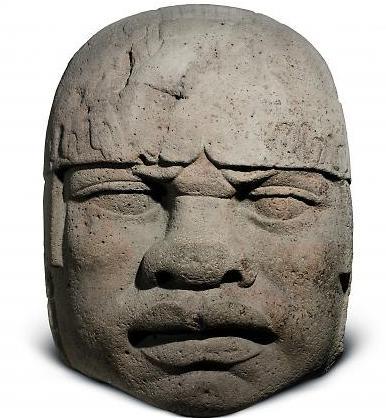
Colossal Head 5, Mexico, Veracruz, Municipality of Texistepec, San Lorenzo Tenochtitlan, 1200–900 BC, basalt, 73 1/4 x 56 11/16 x 49 1/4 inches. Museo de Antropologia de Xalapa, Universidad Veracruzana. Photo: Consejo Nacional para la Cultura y las Artes–Instituto Nacional de Antropologia e Historia–Mexico–Javier Hinojosa
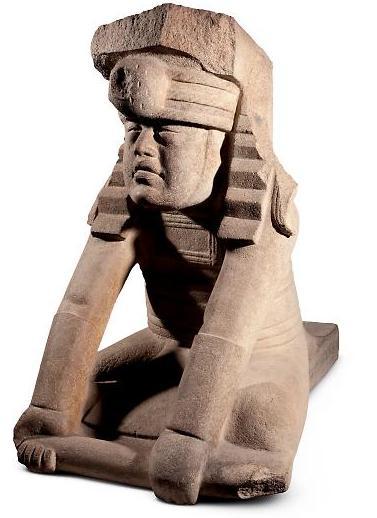
Monument 8 (Twin I), Mexico, Veracruz, Municipality of Texistepec, Loma del Zapote-El Azuzul, 1200–900 BC, andesite, 39 3/8 x 33 7/16 x 49 3/16 inches. Museo de Antropologia de Xalapa, Universidad Veracruzana (10–573558 2/3). Photo: Consejo Nacional para la Cultura y las Artes–Instituto Nacional de Antropologia e Historia–Mexico–Javier Hinojosa
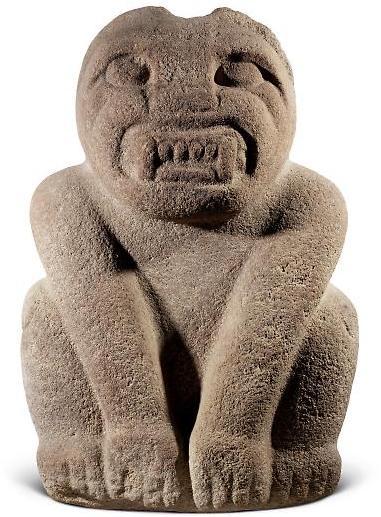
Monument 7 (small feline), Mexico, Veracruz, Municipality of Texistepec, Loma del Zapote-El Azuzul, 1200–900 BC, arkose, 43 1/4 x 30 11/16 x 19 5/8 inches. Museo de Antropologia de Xalapa, Universidad Veracruzana (10-573558 3/3). Photo: Consejo Nacional para la Cultura y las Artes–Instituto Nacional de Antropologia e Historia–Mexico–Javier Hinojosa
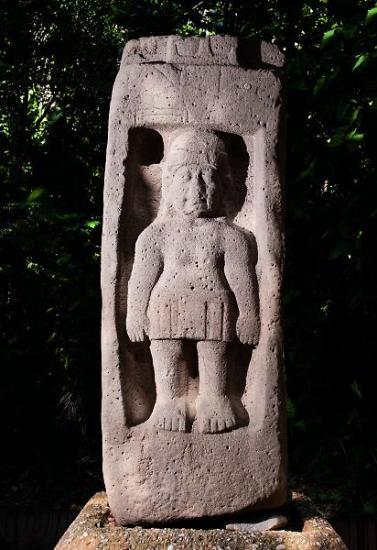
Stela 1 (female figure), Mexico, Tabasco, La Venta, 900–400 BC, basalt, 98 7/16 x 38 9/16 x 27 9/16 inches. Parque-Museo de La Venta, Villahermosa, Tabasco (PMV–033). Photo: Consejo Nacional para la Cultura y las Artes–Instituto Nacional de Antropologia e Historia–Mexico–Javier Hinojosa
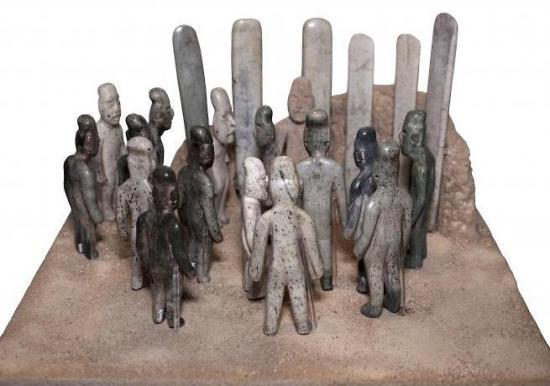
Offering 4 (group of standing figures and celts), Mexico, Tabasco, La Venta, 900–400 BC, Jadeite, serpentine, and an atypical stone (possibly granite). Sixteen figurines, height: 6–7 7/8 in.; six celts, height: 9 3/8–10 in. Museo Nacional de Antropologia, Mexico City. Photo: Consejo Nacional para la Cultura y las Artes–Instituto Nacional de Antropologia e Historia–Mexico–Javier Hinojosa
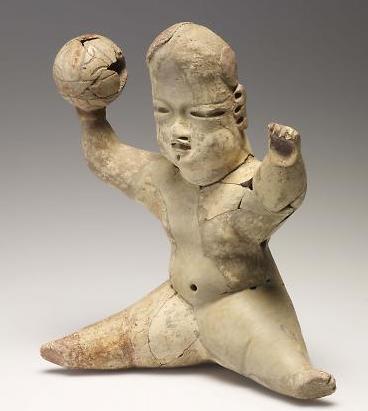
Hollow-baby figure holding a ball, Mexico, Puebla, probably Las Bocas, 1200–800 BC, slip-painted ceramic with pigment, 11 1/4 x 10 inches. FAMSF collection